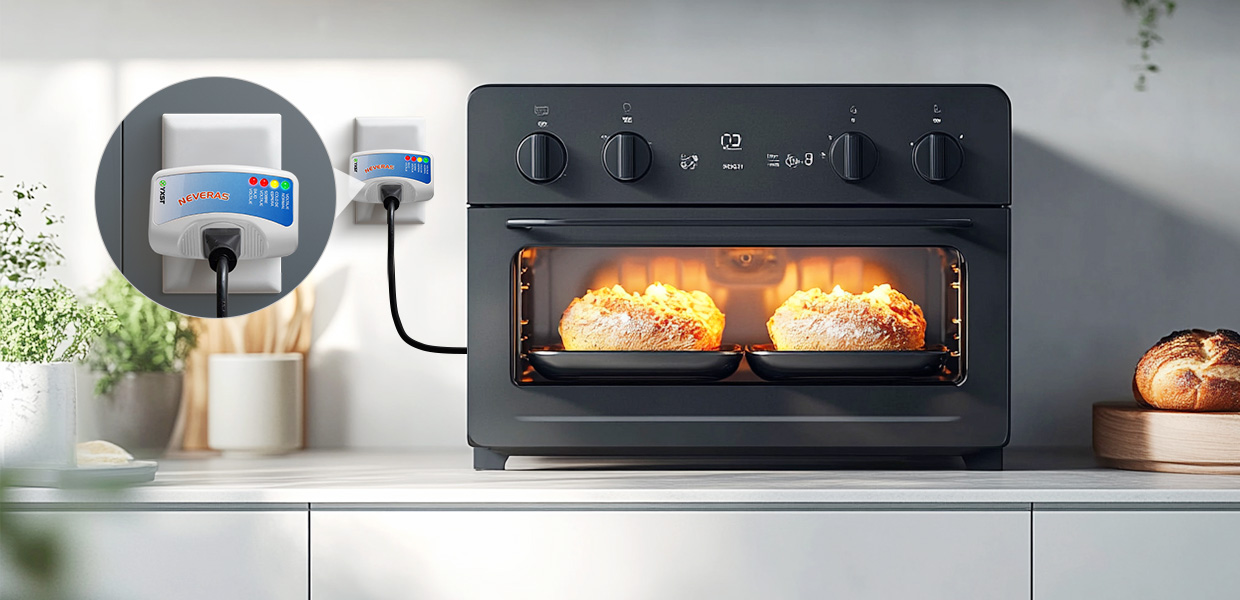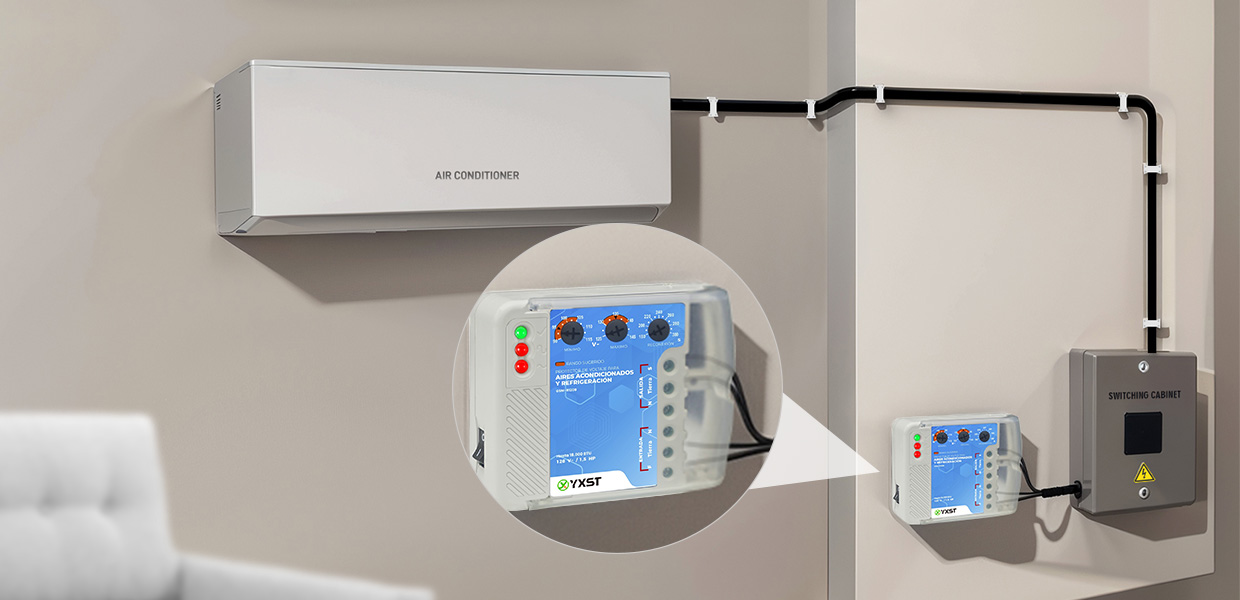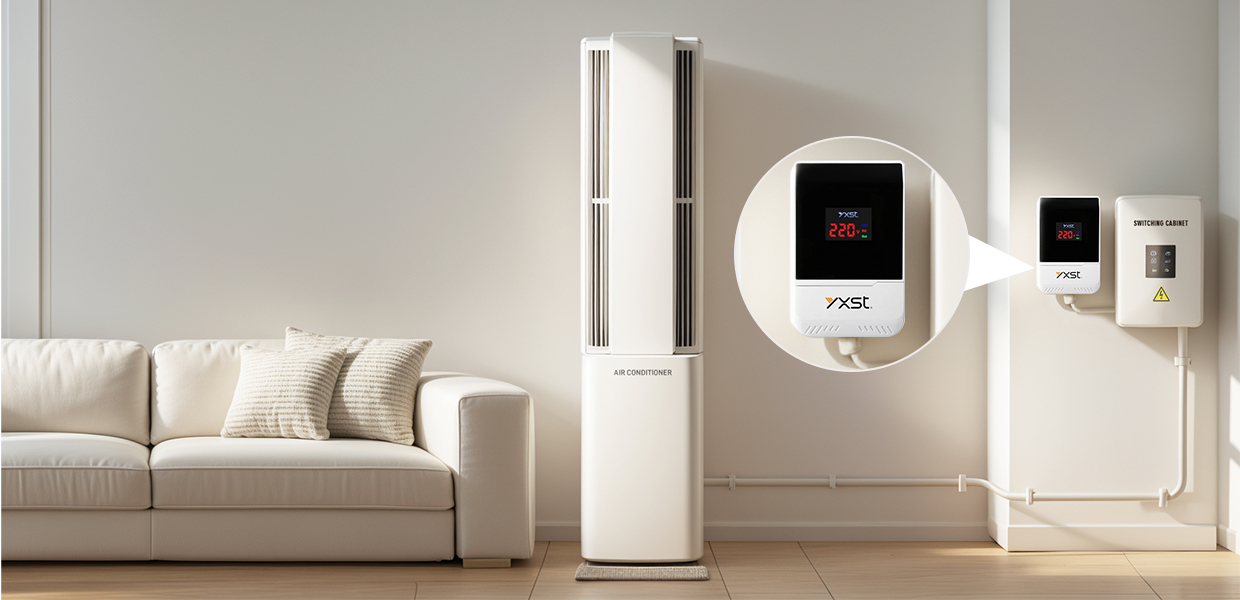A detailed comparative analysis of plug-in air conditioner protectors and wiring air conditioner protectors to help you understand their differences and applications
Date:2025-03-13 Click:649
In electrical connection and equipment protection, plugs, wiring devices and air conditioner protectors play different roles: plugs provide convenient power supply, wiring ensures high-power stable operation, and protectors prevent voltage anomalies and short circuit risks. This article analyzes from three dimensions: core differences (function, installation, safety), comparative data (power/cost/scenario) and practical applications (home/commercial configuration), to help you accurately match your needs and avoid hidden dangers in electricity use.
1. Plug
- Definition: A standardized interface for connecting electrical appliances to power sockets, usually composed of metal contacts and insulating shells.- Function:
- Provide quick connection/disconnection between electrical appliances and power supplies.
- Adapt to voltage and socket standards in different countries/regions (such as national standards, American standards, and European standards).
- Application scenarios:
- Mobile electrical appliances (such as electric fans, and mobile phone chargers).
- Low-power equipment (power is usually ≤3.5kW, such as ordinary air conditioners).
- Features:
- Portability: Plug and play, no professional installation required.
- Limitations: High-power electrical appliances (such as cabinet air conditioners) may cause the plug to overheat due to excessive current, and a special socket is required.
- Common types: 10A three-pin plug (domestic small household appliances), 16A air conditioner special plug (matching high-power equipment).
2. Wiring type (hard connection)
- Definition: An installation method that directly connects to the circuit system through wires, without a plug interface.- Function:
- Provide stable, high-load power transmission.
- Reduce the risk of poor contact and improve safety.
- Application scenarios:
- High-power fixed equipment (such as central air conditioners, and electric water heaters).
- Electrical appliances that need to run for a long time (such as commercial refrigerators).
- Features:
- High safety: Avoid the risk of fire caused by the aging of plug-in contact points.
- Professional installation: Wiring must be done by an electrician and equipped with an independent air switch.
- Non-movable: The equipment is fixedly installed and not easy to disassemble.
- Typical standards: Comply with electrical installation specifications such as GB 7251, and use copper core wires above 4mm².
3. Air conditioner protector
- Definition: Circuit protection device designed for air conditioners, integrating multiple protection functions.
- Core functions:
- Overcurrent/short circuit protection: Automatically cut off when current is abnormal (such as compressor stall).
- Overvoltage/Undervoltage protection: Power off when voltage exceeds the range of 198V-264V to prevent motor burnout.
- Delayed start: Automatically delay power on for 3-5 minutes after power outage to protect the compressor.
- Lightning protection: Some high-end models integrate surge protection (such as 20kA discharge capacity).
- Application scenarios:
- All split air conditioners (especially in areas with unstable voltage).
- Critical equipment such as precision machine room air conditioners.
- Type comparison:
- Basic type: single-phase protector (suitable for home use).
- Installation method:
- Can be installed independently in the distribution box or integrated into the air conditioner power line.
Key Difference Comparison Table
| Features | Plug | Wiring type | Air conditioner protector |
| Core function | Appliance and power connection | High load fixed power supply | Multiple circuit protection |
| Applicable power | ≤3.5kW | ≥2kW (no upper limit) | Suitable for 0.5-10HP air conditioners according to the model |
| Installation complexity | User plugs and unplugs | Requires professional electrician wiring | Need circuit integration or distribution box installation |
| Mobility | High | None | Fixed installation |
| Safety level | Depends on the quality of the socket | High (reduce contact points) | Active protection mechanism |
Practical application suggestions
1. Household air conditioner selection:
- Wall-mounted units below 1.5P: 16A plug + dedicated socket (ensure the line is 2.5mm²).
- Cabinet units above 3P: must be installed in wiring mode and equipped with a 32A dedicated circuit breaker.
2. Necessity of protector:
- Old residential areas/thunderstorm-prone areas: it is recommended to install models with surge protection.
- Inverter air conditioners: give priority to models that support inverter protection.
3. Regulatory requirements:
- National standard GB 17701 stipulates that fixed equipment with a rated current ≥16A is prohibited from using plug connection.
- IEC 60364-7-722: Air conditioning circuits must be equipped with overvoltage protection and residual current devices (RCD).
Through the above comparison, you can reasonably choose the connection method and protection scheme according to the specific usage scenario, equipment power, and safety requirements.




